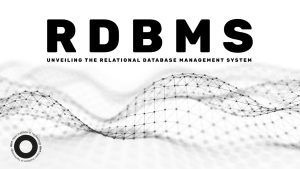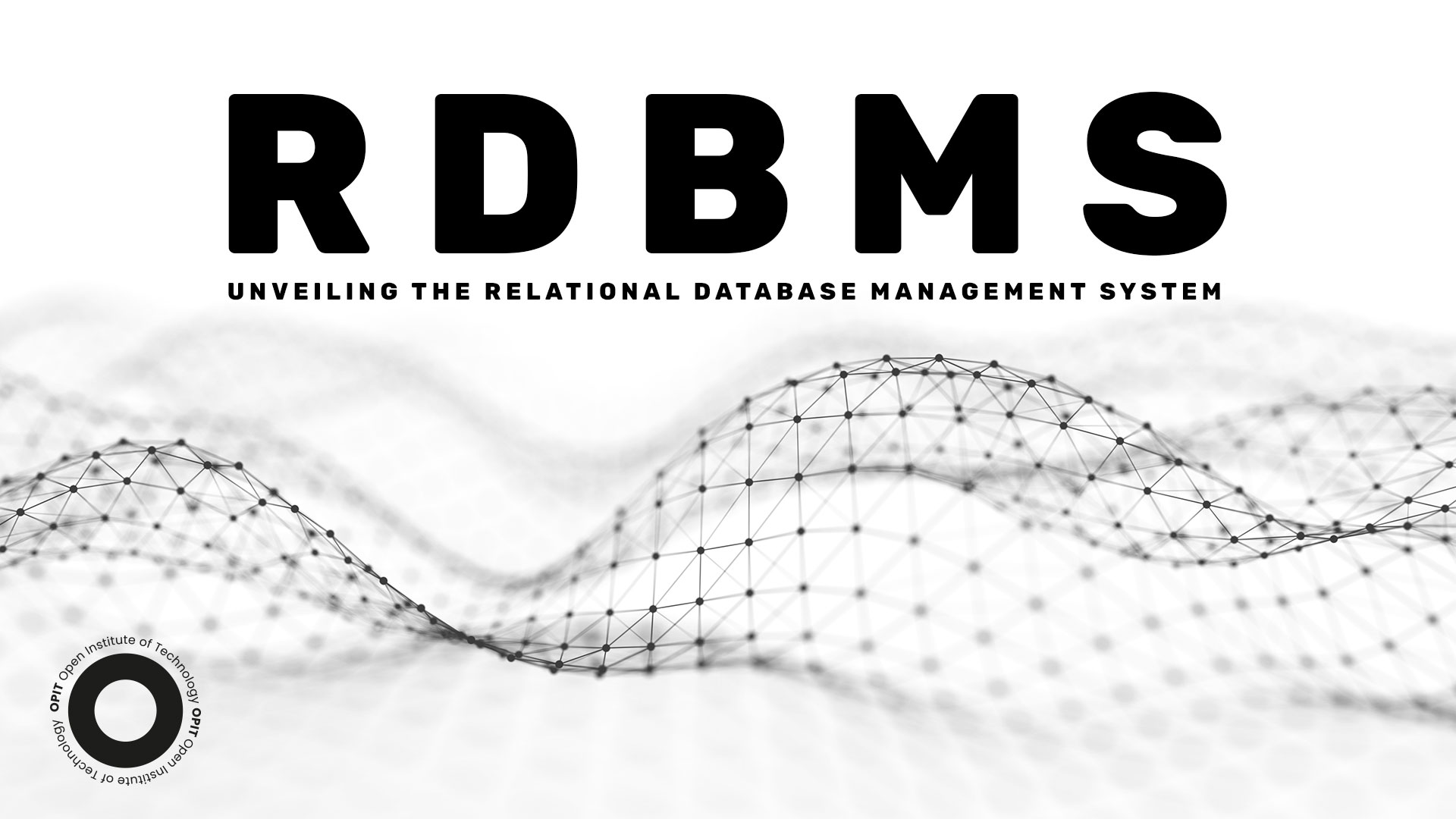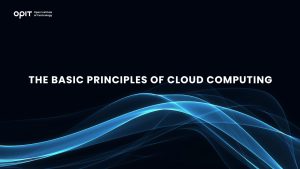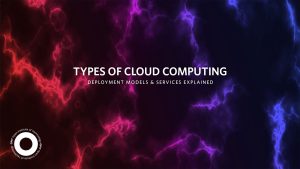

When you first get into modern computing, one of the terms that comes up most frequently is relational databases. These are clusters that are organized in such a way that they effortlessly find links between connected data points.
Relational databases are convenient, but what happens when you deal with vast amounts of information? You need something to act as your North Star, guiding you through the network and allowing you to stay on top of the data.
That something is an RDBMS. According to Google, RDBMS stands for a relational database management system – software that sets up and manages relational databases. In its full form, it’s been the light at the end of the tunnel for thousands of companies due to its accuracy, security, and ease of use.
The definition and importance of RDBMSs are the tip of the iceberg when it comes to these systems. This introduction to RDBMS will delve a bit deeper by taking a closer look at the concept of RDBMS, the history of this technology, use cases, and the most common examples.
History of RDBMS
The concept of RDBMS might be shrouded in mystery for some. Thus, several questions may come up when discussing the notion, including one as basic as “What is RDBMS?”
Knowing the RDBMS definition is a great starting point on your journey to understanding this concept. But let’s take a few steps back and delve into the history of this system.
Origins of the Relational Model
What if we told you that the RDBMS concepts are older than the internet? It may sound surprising, but it’s true.
The concept of RDBMS was developed by Edgar F. Codd 43 years ago. He aimed to propose a more efficient way to store information, a method that would consume drastically less memory than anything at the time. His model was groundbreaking, to say the least.
E.F. Codd’s Paper on Relational Model
Codd laid down his proposal in a 1970s paper called “A Relational Model of Data for Large Shared Data Banks.” He advocated a database solution comprised of intertwined tables. These tables enabled the user to keep their information compact, lowering the amount of disk space necessary for storage (which was scarce at the time).
The rest is history. The public welcomed Codd’s model with open arms since it optimized storage requirements and allowed people to answer practically any question using his principle.
Development of SQL
Codd’s research paved the way for relational database management systems, the most famous of which is SQL. This programming language was also developed in the ‘70s and was originally named SEQUEL (Structured English Query Language). It was quickly implemented across the computing industry and grew more powerful as the years went by.
Evolution of RDBMS Software
The evolution of RDBMS software has been fascinating.
Early RDBMS Software
The original RDBMS software was powerful, but it wasn’t a cure-all. It was a match made in heaven for users dealing with structured data, allowing them to organize it with minimal effort. However, pictures, music, and other forms of unstructured information were largely incompatible with this model.
Modern RDBMS Software
Today’s RDBMS solutions have come a long way from their humble beginnings. A modern relational DBMS can process different forms of information with ease. Programs like MySQL are versatile, adaptable, and easy to set up, helping database professionals spearhead the development of practically any application.
Key Concepts in RDBMS
Here’s another request you may have for an expert in RDBMS – explain the most significant relational database concepts. If that’s your question, your request has been granted. Coming up is an overview of RDBMS concepts that explain RDBMS in simple terms.
Tables and Relations
Tables and relations are the bread and butter of all relational database management systems. They sound straightforward, but they’re much different from, say, elements you come across in Microsoft Excel.
Definition of Tables
Tables are where data is stored in an RDBMS. They’re comprised of rows and columns for easier organization.
Definition of Relations
Relations are the links between tables. There can be several types of relations, such as one-to-one connections. This form means a data point from one table only matches one data point from another table.
Primary and Foreign Keys
No discussion about RDBMS solutions is complete without primary and foreign keys.
Definition of Primary Keys
A primary key is the unique element of each table that defines the table’s rows. The number of primary keys in a table is limited to one.
Definition of Foreign Keys
Foreign keys are used to form an inextricable bond between tables. They always refer to the primary key of another table.
Normalization
Much of database management is akin to separating wheat from the chaff. One of the processes that allow you to do so is normalization.
Purpose of Normalization
Normalization is about restoring (or creating) order in a database. It’s the procedure of eradicating unnecessary data for the purpose of cleaner tables and smoother management.
Normal Forms
Every action has its reaction. For example, the reaction of normalization is normal forms. These are forms of data that are free from redundant or duplicate information, making them easily accessible.
Popular RDBMS Software
This article has dissected basic relational database concepts, the RDBMS meaning, and RDBMS full form. To further shed light on the technology, take a look at the crème de la crème of RDBMS platforms.
Oracle Database
If you want to make headway in the database management industry, Oracle Database can be one of your best friends.
Overview of Oracle Database
Oracle Database is the most famous RDBMS around. The very database of this network is called Oracle, and the software comes in five different versions. Each rendition has a specific set of features and benefits, but some perks hold true for each one.
Key Features and Benefits
- Highly secure – Oracle employs top-grade security measures.
- Scalable – The system supports company growth with adaptable features.
- Available – You can tap into the architecture whenever necessary for seamless adjustments.
Microsoft SQL Server
Let’s see what another powerhouse – Microsoft SQL Server – brings to the table.
Overview of Microsoft SQL Server
Microsoft SQL Server is a reliable RDBMS with admirable capabilities. Like Oracle, it’s available in a range of editions to target different groups, including personal and enterprise users.
Key Features and Benefits
- Fast – Few systems rival the speed of Microsoft SQL Server.
- Versatile – The network supports on-premise and cloud applications.
- Affordable – You won’t burn a hole in your pocket if you buy the standard version.
MySQL
You can take your business to new heights with MySQL. The following section will explore what makes this RDBMS a go-to pick for Uber, Slack, and many other companies.
Overview of MySQL
MySQL is another robust RDBMS that enables fast data retrieval. It’s an open-source solution, making it less complex than some other platforms.
Key Features and Benefits
- Quick – Efficient memory use speeds up the MySQL environment.
- Secure – Bulletproof password systems safeguard against hacks.
- Scalable – You can use MySQL both for small and large data sets.
PostgreSQL
Last but not least, PostgreSQL is a worthy contender for the best RDBMS on the market.
Overview of PostgreSQL
If you need a long-running RDBMS, you can’t go wrong with PostgreSQL. It’s an open-source solution that’s received more than two decades’ worth of refinement.
Key Features and Benefits
- Nested transactions – These elements deliver higher concurrency control.
- Anti-hack environment – Advanced locking features keep cybercriminals at bay.
- Table inheritance – This feature makes the network more consistent.
RDBMS Use Cases
Now we get to what might be the crux of the RDBMS discussion: Where can you implement these convenient solutions?
Data Storage and Retrieval
- Storing large amounts of structured data – Use an RDBMS to keep practically unlimited structured data.
- Efficient data retrieval – Retrieve data in a split second with an RDBMS.
Data Analysis and Reporting
- Analyzing data for trends and patterns – Discover customer behavior trends with a robust RDBMS.
- Generating reports for decision-making – Facilitate smart decision-making with RDBMS-generated reports.
Application Development
- Backend for web and mobile applications – Develop a steady web and mobile backend architecture with your RDBMS.
- Integration with other software and services – Combine an RDBMS with other programs to elevate its functionality.
RDBMS vs. NoSQL Database
Many alternatives to RDBMS have sprung up, including NoSQL databases. But what makes these two systems different?
Overview of NoSQL Databases
A NoSQL database is the stark opposite of RDBMS solutions. It takes a non-relational approach, which is deemed more efficient by many.
Key Differences Between RDBMS and NoSQL Databases
- Data model – RDBMSs store structured data, whereas NoSQL databases store unstructured information.
- Scalability – NoSQL is more scalable because it doesn’t require a fixed schema (relation-based model).
- Consistency – RDBMSs achieve consistency through rules, while NoSQL models feature eventual consistency.
Choosing the Right Database for Your Needs
Keep these guidelines in mind when selecting your database platform:
- Use an RDBMS for centralized apps and NoSQL for decentralized solutions.
- Use an RDBMS for structured data and NoSQL for unstructured data.
- Use an RDBMS for moderate data activity and NoSQL for high data activity.
Exploring the Vast Utility of RDBMS
If you’re looking for a descriptive answer to the “what is relational database management system question,” here it is – it is the cornerstone of database management for countless enterprises. It’s ideal for structured data projects and gives the user the reins of data management. Plus, it’s as secure as it gets.
The future looks even more promising. Database professionals are expected to rely more on blockchain technology and cloud storage to elevate the efficacy of RDBMS.
Related posts

Source:
- Agenda Digitale, published on November 25th, 2025
In recent years, the word ” sustainability ” has become a firm fixture in the corporate lexicon. However, simply “doing no harm” is no longer enough: the climate crisis , social inequalities , and the erosion of natural resources require a change of pace. This is where the net-positive paradigm comes in , a model that isn’t content to simply reduce negative impacts, but aims to generate more social and environmental value than is consumed.
This isn’t about philanthropy, nor is it about reputational makeovers: net-positive is a strategic approach that intertwines economics, technology, and corporate culture. Within this framework, digitalization becomes an essential lever, capable of enabling regenerative models through circular platforms and exponential technologies.
Blockchain, AI, and IoT: The Technological Triad of Regeneration
Blockchain, Artificial Intelligence, and the Internet of Things represent the technological triad that makes this paradigm shift possible. Each addresses a critical point in regeneration.
Blockchain guarantees the traceability of material flows and product life cycles, allowing a regenerated dress or a bottle collected at sea to tell their story in a transparent and verifiable way.
Artificial Intelligence optimizes recovery and redistribution chains, predicting supply and demand, reducing waste and improving the efficiency of circular processes .
Finally, IoT enables real-time monitoring, from sensors installed at recycling plants to sharing mobility platforms, returning granular data for quick, informed decisions.
These integrated technologies allow us to move beyond linear vision and enable systems in which value is continuously regenerated.
New business models: from product-as-a-service to incentive tokens
Digital regeneration is n’t limited to the technological dimension; it’s redefining business models. More and more companies are adopting product-as-a-service approaches , transforming goods into services: from technical clothing rentals to pay-per-use for industrial machinery. This approach reduces resource consumption and encourages modular design, designed for reuse.
At the same time, circular marketplaces create ecosystems where materials, components, and products find new life. No longer waste, but input for other production processes. The logic of scarcity is overturned in an economy of regenerated abundance.
To complete the picture, incentive tokens — digital tools that reward virtuous behavior, from collecting plastic from the sea to reusing used clothing — activate global communities and catalyze private capital for regeneration.
Measuring Impact: Integrated Metrics for Net-Positiveness
One of the main obstacles to the widespread adoption of net-positive models is the difficulty of measuring their impact. Traditional profit-focused accounting systems are not enough. They need to be combined with integrated metrics that combine ESG and ROI, such as impact-weighted accounting or innovative indicators like lifetime carbon savings.
In this way, companies can validate the scalability of their models and attract investors who are increasingly attentive to financial returns that go hand in hand with social and environmental returns.
Case studies: RePlanet Energy, RIFO, and Ogyre
Concrete examples demonstrate how the combination of circular platforms and exponential technologies can generate real value. RePlanet Energy has defined its Massive Transformative Purpose as “Enabling Regeneration” and is now providing sustainable energy to Nigerian schools and hospitals, thanks in part to transparent blockchain-based supply chains and the active contribution of employees. RIFO, a Tuscan circular fashion brand, regenerates textile waste into new clothing, supporting local artisans and promoting workplace inclusion, with transparency in the production process as a distinctive feature and driver of loyalty. Ogyre incentivizes fishermen to collect plastic during their fishing trips; the recovered material is digitally tracked and transformed into new products, while the global community participates through tokens and environmental compensation programs.
These cases demonstrate how regeneration and profitability are not contradictory, but can actually feed off each other, strengthening the competitiveness of businesses.
From Net Zero to Net Positive: The Role of Massive Transformative Purpose
The crucial point lies in the distinction between sustainability and regeneration. The former aims for net zero, that is, reducing the impact until it is completely neutralized. The latter goes further, aiming for a net positive, capable of giving back more than it consumes.
This shift in perspective requires a strong Massive Transformative Purpose: an inspiring and shared goal that guides strategic choices, preventing technology from becoming a sterile end. Without this level of intentionality, even the most advanced tools risk turning into gadgets with no impact.
Regenerating business also means regenerating skills to train a new generation of professionals capable not only of using technologies but also of directing them towards regenerative business models. From this perspective, training becomes the first step in a transformation that is simultaneously cultural, economic, and social.
The Regenerative Future: Technology, Skills, and Shared Value
Digital regeneration is not an abstract concept, but a concrete practice already being tested by companies in Europe and around the world. It’s an opportunity for businesses to redefine their role, moving from mere economic operators to drivers of net-positive value for society and the environment.
The combination of blockchain, AI, and IoT with circular product-as-a-service models, marketplaces, and incentive tokens can enable scalable and sustainable regenerative ecosystems. The future of business isn’t just measured in terms of margins, but in the ability to leave the world better than we found it.

Source:
- Raconteur, published on November 06th, 2025
Many firms have conducted successful Artificial Intelligence (AI) pilot projects, but scaling them across departments and workflows remains a challenge. Inference costs, data silos, talent gaps and poor alignment with business strategy are just some of the issues that leave organisations trapped in pilot purgatory. This inability to scale successful experiments means AI’s potential for improving enterprise efficiency, decision-making and innovation isn’t fully realised. So what’s the solution?
Although it’s not a magic bullet, an AI operating model is really the foundation for scaling pilot projects up to enterprise-wide deployments. Essentially it’s a structured framework that defines how the organisation develops, deploys and governs AI. By bringing together infrastructure, data, people, and governance in a flexible and secure way, it ensures that AI delivers value at scale while remaining ethical and compliant.
“A successful AI proof-of-concept is like building a single race car that can go fast,” says Professor Yu Xiong, chair of business analytics at the UK-based Surrey Business School. “An efficient AI technology operations model, however, is the entire system – the processes, tools, and team structures – for continuously manufacturing, maintaining, and safely operating an entire fleet of cars.”
But while the importance of this framework is clear, how should enterprises establish and embed it?
“It begins with a clear strategy that defines objectives, desired outcomes, and measurable success criteria, such as model performance, bias detection, and regulatory compliance metrics,” says Professor Azadeh Haratiannezhadi, co-founder of generative AI company Taktify and professor of generative AI in cybersecurity at OPIT – the Open Institute of Technology.
Platforms, tools and MLOps pipelines that enable models to be deployed, monitored and scaled in a safe and efficient way are also essential in practical terms.
“Tools and infrastructure must also be selected with transparency, cost, and governance in mind,” says Efrain Ruh, continental chief technology officer for Europe at Digitate. “Crucially, organisations need to continuously monitor the evolving AI landscape and adapt their models to new capabilities and market offerings.”
An open approach
The most effective AI operating models are also founded on openness, interoperability and modularity. Open source platforms and tools provide greater control over data, deployment environments and costs, for example. These characteristics can help enterprises to avoid vendor lock-in, successfully align AI to business culture and values, and embed it safely into cross-department workflows.
“Modularity and platformisation…avoids building isolated ‘silos’ for each project,” explains professor Xiong. “Instead, it provides a shared, reusable ‘AI platform’ that integrates toolchains for data preparation, model training, deployment, monitoring, and retraining. This drastically improves efficiency and reduces the cost of redundant work.”
A strong data strategy is equally vital for ensuring high-quality performance and reducing bias. Ideally, the AI operating model should be cloud and LLM agnostic too.
“This allows organisations to coordinate and orchestrate AI agents from various sources, whether that’s internal or 3rd party,” says Babak Hodjat, global chief technology officer of AI at Cognizant. “The interoperability also means businesses can adopt an agile iterative process for AI projects that is guided by measuring efficiency, productivity, and quality gains, while guaranteeing trust and safety are built into all elements of design and implementation.”
A robust AI operating model should feature clear objectives for compliance, security and data privacy, as well as accountability structures. Richard Corbridge, chief information officer of Segro, advises organisations to: “Start small with well-scoped pilots that solve real pain points, then bake in repeatable patterns, data contracts, test harnesses, explainability checks and rollback plans, so learning can be scaled without multiplying risk. If you don’t codify how models are approved, deployed, monitored and retired, you won’t get past pilot purgatory.”
Of course, technology alone can’t drive successful AI adoption at scale: the right skills and culture are also essential for embedding AI across the enterprise.
“Multidisciplinary teams that combine technical expertise in AI, security, and governance with deep business knowledge create a foundation for sustainable adoption,” says Professor Haratiannezhadi. “Ongoing training ensures staff acquire advanced AI skills while understanding associated risks and responsibilities.”
Ultimately, an AI operating model is the playbook that enables an enterprise to use AI responsibly and effectively at scale. By drawing together governance, technological infrastructure, cultural change and open collaboration, it supports the shift from isolated experiments to the kind of sustainable AI capability that can drive competitive advantage.
In other words, it’s the foundation for turning ambition into reality, and finally escaping pilot purgatory for good.
Have questions?
Visit our FAQ page or get in touch with us!
Write us at +39 335 576 0263
Get in touch at hello@opit.com
Talk to one of our Study Advisors
We are international
We can speak in:


